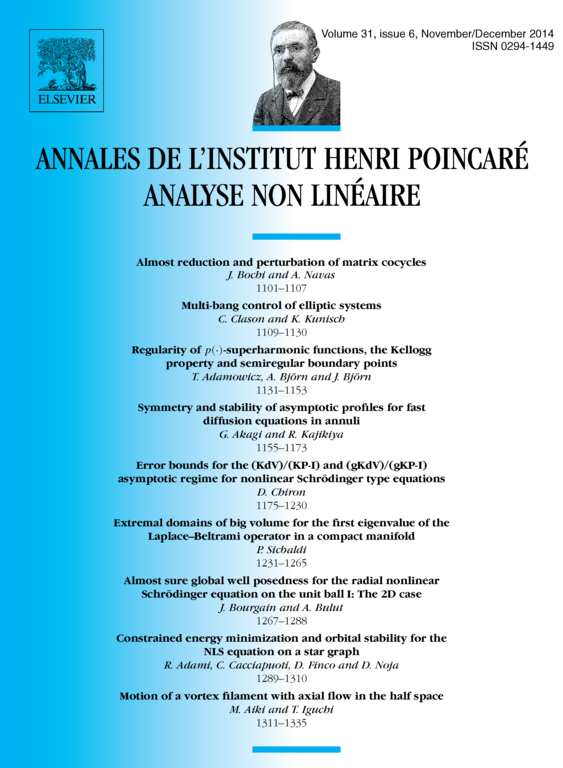Constrained energy minimization and orbital stability for the NLS equation on a star graph
Riccardo Adami
Dipartimento di Scienze Matematiche, Politecnico di Torino, C.so Duca degli Abruzzi 24, 10129 Torino, ItalyDiego Noja
Dipartimento di Matematica e Applicazioni, Università di Milano Bicocca, via R. Cozzi, 53, 20125 Milano, ItalyClaudio Cacciapuoti
Hausdorff Center for Mathematics, Institut für Angewandte Mathematik, Endenicher Allee, 60, 53115 Bonn, GermanyDomenico Finco
Facoltà di Ingegneria, Università Telematica Internazionale Uninettuno, Corso Vittorio Emanuele II 39, 00186 Roma, Italy

Abstract
On a star graph , we consider a nonlinear Schrödinger equation with focusing nonlinearity of power type and an attractive Dirac's delta potential located at the vertex. The equation can be formally written as , where the strength of the vertex interaction is negative and the wave function is supposed to be continuous at the vertex. The values of the mass and energy functionals are conserved by the flow. We show that for the energy at fixed mass is bounded from below and that for every mass below a critical mass it attains its minimum value at a certain .
Moreover, the set of minimizers has the structure . Correspondingly, for every there exists a unique such that the standing wave is orbitally stable. To prove the above results we adapt the concentration-compactness method to the case of a star graph. This is nontrivial due to the lack of translational symmetry of the set supporting the dynamics, i.e. the graph. This affects in an essential way the proof and the statement of concentration-compactness lemma and its application to minimization of constrained energy. The existence of a mass threshold comes from the instability of the system in the free (or Kirchhoff's) case, that in our setting corresponds to .
Cite this article
Riccardo Adami, Diego Noja, Claudio Cacciapuoti, Domenico Finco, Constrained energy minimization and orbital stability for the NLS equation on a star graph. Ann. Inst. H. Poincaré Anal. Non Linéaire 31 (2014), no. 6, pp. 1289–1310
DOI 10.1016/J.ANIHPC.2013.09.003